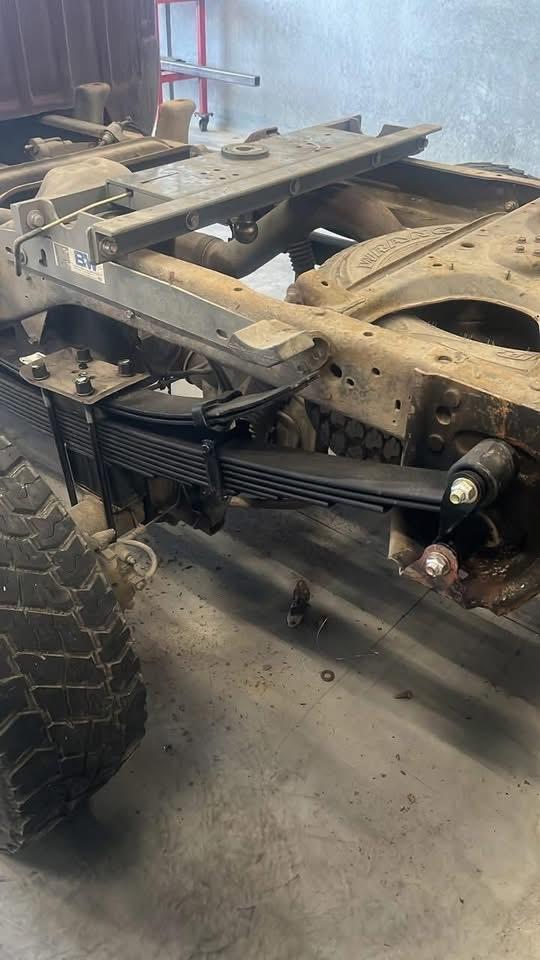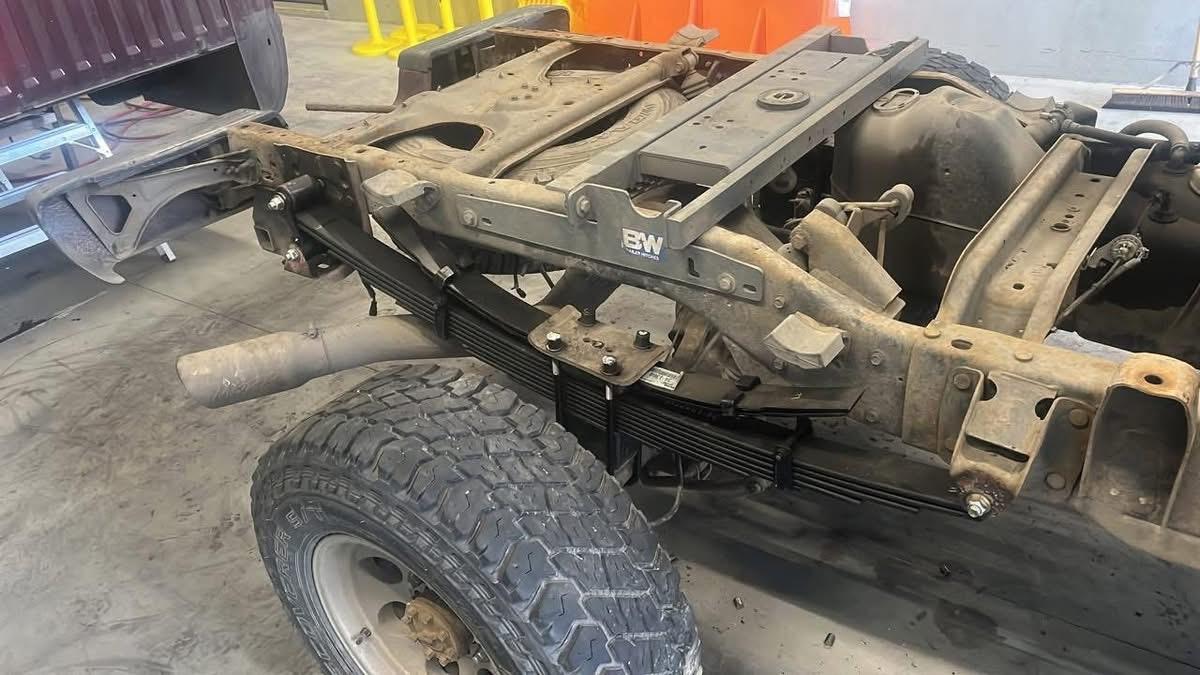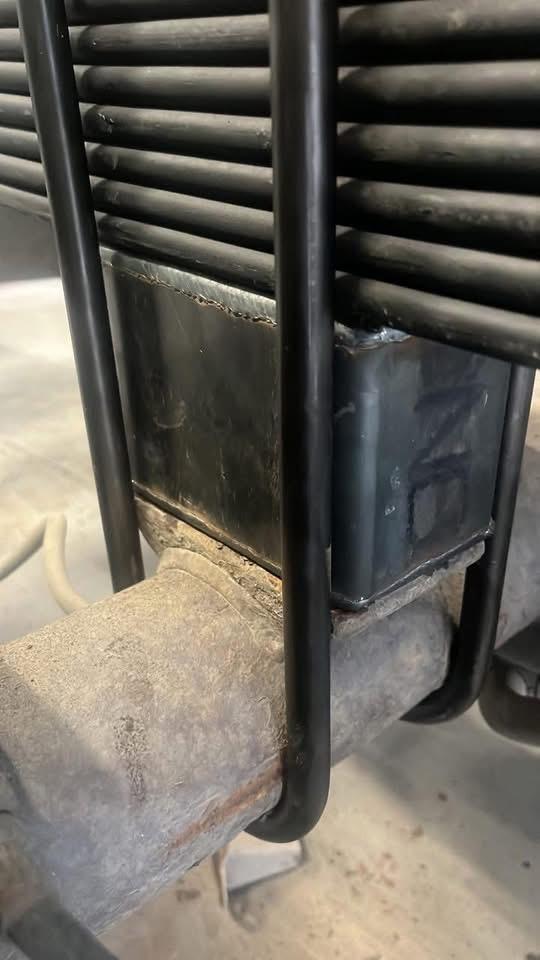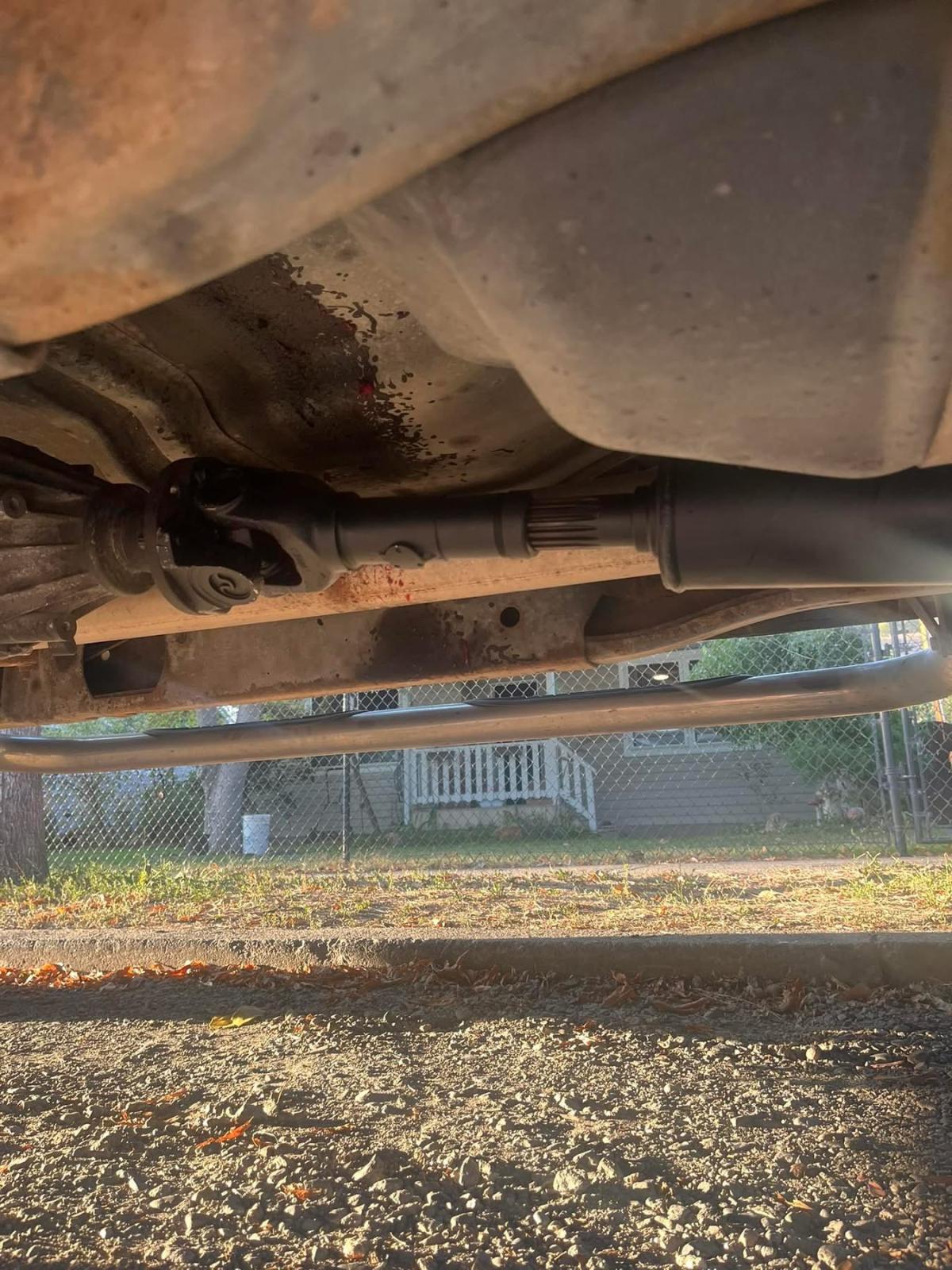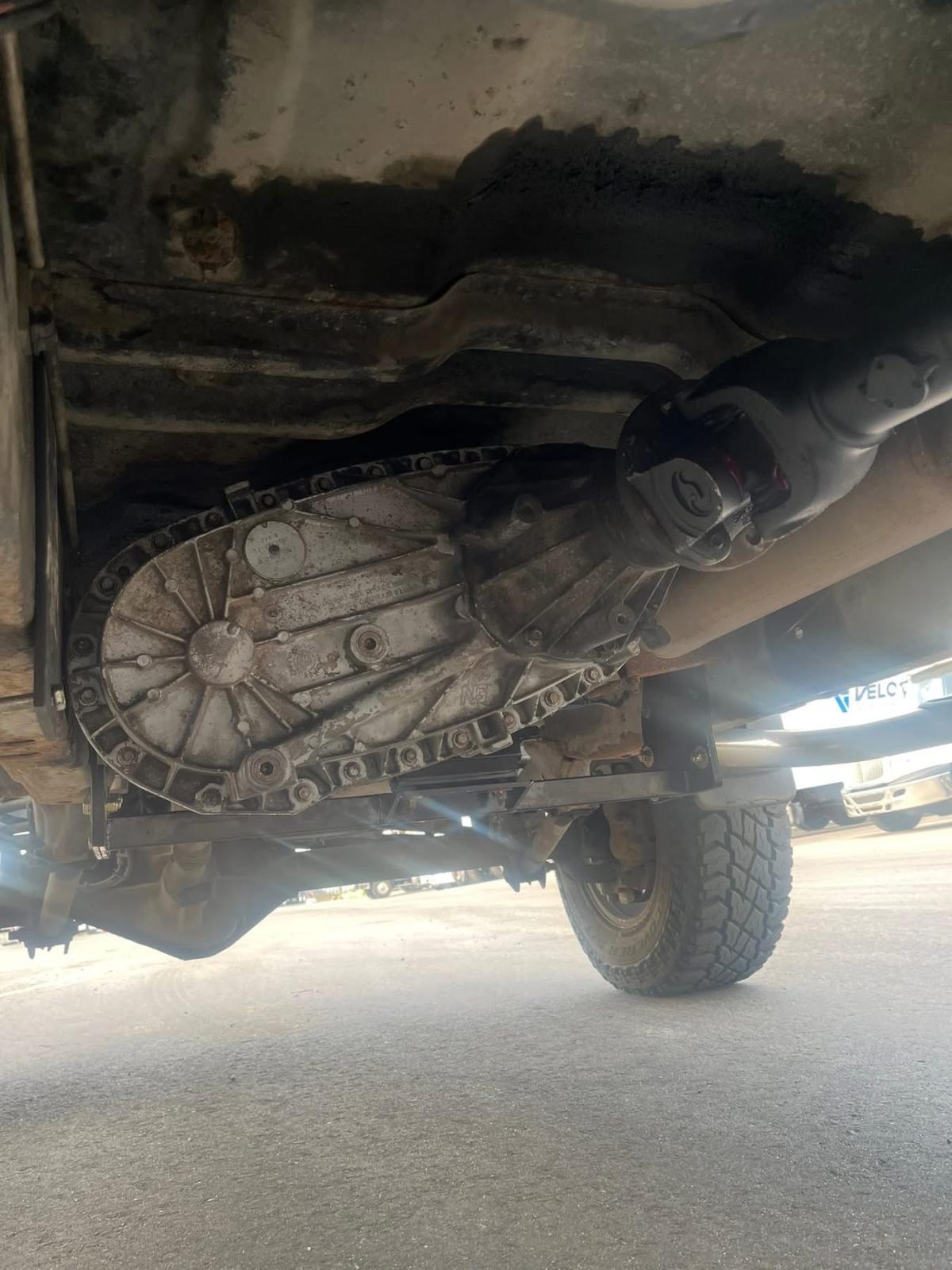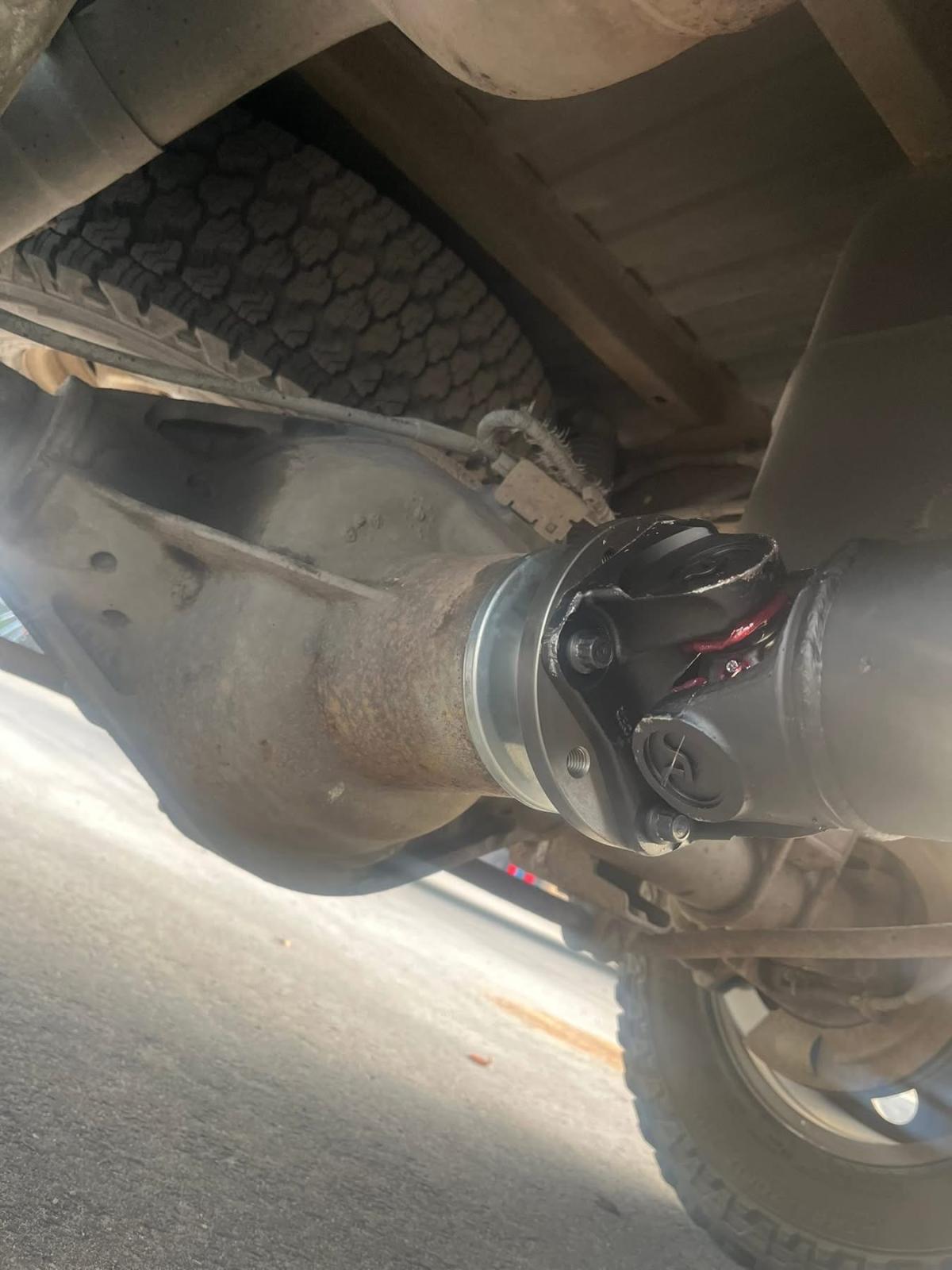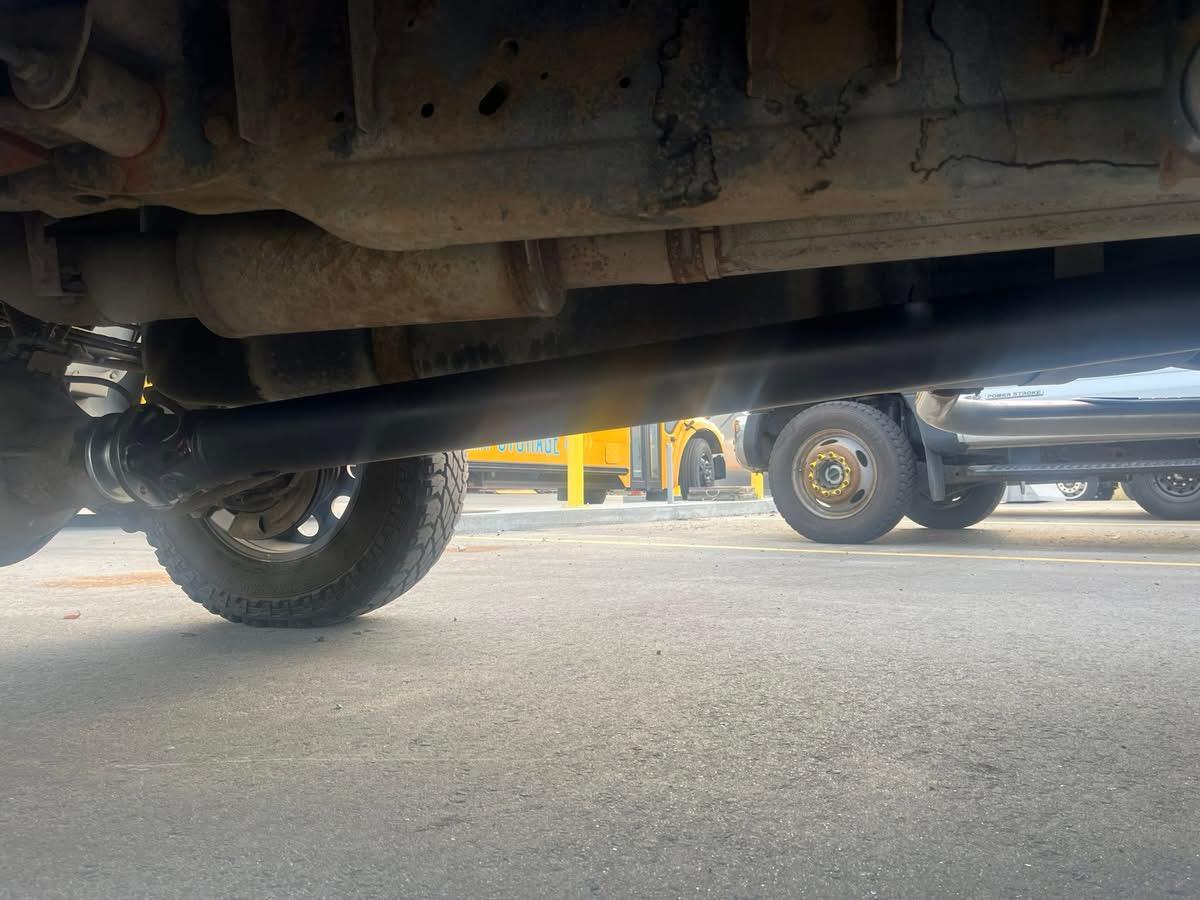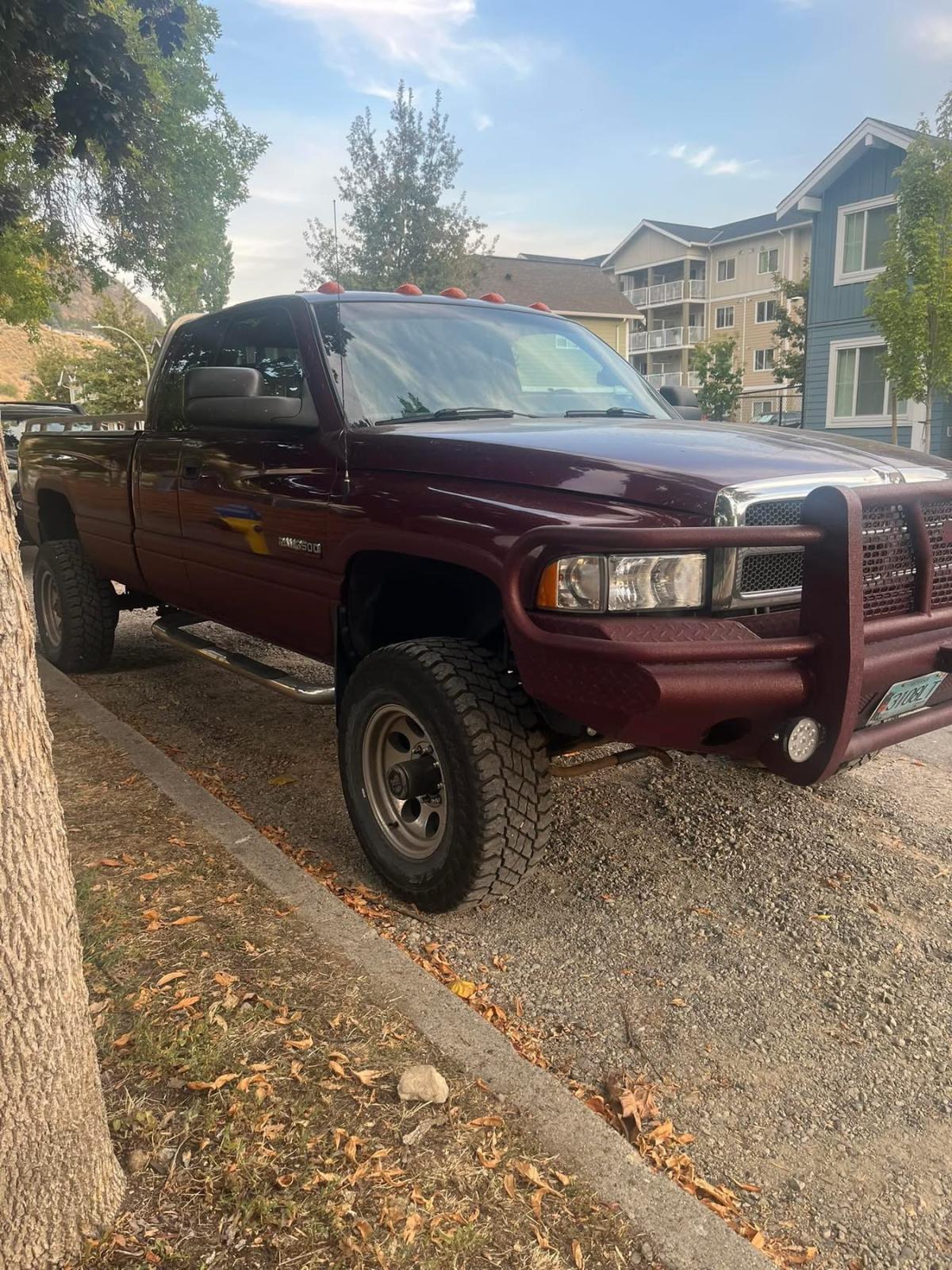-
Yoke Grenaded
And this is why I went to a flange.
-
-
Suspension fun!
It’s time to “spring” into action! 8 leaf 4000 lb pack 2 leaf 1150 lb overloads New shackles (All from Rockauto) I used 4” blocks from ProForm Fabrication (they’re also tapered to get the pinion angle straight too). I didn’t want the *** end to sit up super duper high so to compensate for the thicker pack I used slightly shorter blocks (my oem blocks are 4.5” tall). Old leaf pack is 2” thick and the new ones are 3-9/16“. The bolt by the fuel tank is not really an issue. Just cut it off flush with the hanger and you can drive it all the way in without hitting the tank. You can fish it out with a magnet and then put the new bolt in from the outside. I used locally made 5/8” ubolts and my old Barnes4wd top plates to keep the flip. For the eyelets I used 5/8”x 5” fine thread bolts with stover nuts. Removed the old bump stops since they do nothing now. My truck is a 2001, so it’s time for new springs. I can’t use airbags because unless it’s the c&c kit my gooseneck hitch interferes with the mounting plates. Also the c&c kit sits on the oem block pedestals and I don’t have those anymore now. Next up: Rebuilt NV5600 & clutch from LRG. Enjoy!
-
P1693 and P0121, Surging, dead pedal AND runs just fine
Timbo is a repackaged Williams Control. WC 131973/133284 is what they actually are.
-
Radiator Lifespan
Then I may be interested. If you know a tune that’ll make it run better I’m all ears.
-
Radiator Lifespan
I’m sure there’s a lot of trucks with more miles than me. I’m pretty happy with 25 years. Even if it dies tomorrow I’m pleased it went this long. I’m also sure things like the VP are built better today then when they came out.
-
Radiator Lifespan
I had the oem lift pump (in conjunction with the GDP Fuel Boss) until my ecm failed earlier this year. Now I’m rocking just an Airdog 100. I’m too nervous to program my truck just in the case the tuner fails and takes something else out. Although I’m curious to see it “woken up”. New trucks leave me in the dust and I’ve accepted it haha.
-
Radiator Lifespan
Luck mostly. We didn’t actually have to change over to ULSD for a couple years when it was introduced. When it was finally forced I ran used 15w40 (just the stuff from my oil changes) with every fill up (switched to 2 stroke oil after reading your article on it). Also, I never had the Carter lift pump fail like so many did in the beginning. By the time I switch it to the GDP Fuel Boss it just wouldn’t die. Also I have never run a tune either. I have Bosch 40 hp injectors but power wise it’s stock. That’s the key thing. P7100 are oil lubed and VP’s are with fuel. So mostly just luck.
-
Radiator Lifespan
I’m on my original rad @ 442k km. I change the coolant every 2 years with Cummins ELC. I wish these engines had a spin on water filter head like the 8.3 has (built into the engine). I’m also on my original VP44…ask me the secret to that ;)
-
Mace started following Electric vacuum pump
-
Electric vacuum pump
Electric Vacuum Pump Conversion: I have deleted my OEM vacuum and power steering pump(s). Instead, I have modified it by replacing it with a midrange setup for steering assist; however, I still need vacuum in order to activate the HVAC controls and to activate my exhaust brake. Although the OEM factory pump never gave me any issues and supplied all the vacuum I needed to work, such as the HVAC and the exhaust brake, the OEM Power Steering did. I have replaced the OEM Power Steering Pump multiple times. In all cases, the pump would not maintain enough pressure and turning the wheels at a stop during idle was almost impossible. Compound that with the inevitable oil leak between both pumps, I figured there was a better system. So, this is where the "midrange" setup comes into play. The 24V ISB was used in multiple applications (not just Dodge). Even though they were not used in another pickup, they were used in midrange sized trucks like Freightliner FL60 &FL80, Ford 650 & 750, Kenworth 370, motor homes, bread trucks, etc, etc. It was the engine of its era. Trucks with vacuum controlled cruise should work also. This particular modification applies to my setup only; (the midrange setup for steering assist). My cruise is ECM controlled. I have the non CAD front axle, so my vacuum demand is limited. On SD applications, they use it to lock the front hubs and HVAC on their trucks. So I feel it should work on any of our vehicles. I used the same pump from the SuperDuty and 3rd Gen RAMS (same pump). I picked it up from Rock Auto along with a Mating Connector. I drilled 3 holes and mounted it on the fuse box cover, in an easy to service spot. For plumbing, it goes to a control manifold for the EB, and tees off into the OEM vacuum line on the firewall. I do not use a reservoir like FORD uses, but you could run one if you desire it. For power, it gets fused voltage from the PDC power stud, which is also the relay supply power (pin 30). The relay trigger is controlled by a fuse tap in one of the PDC fuses, that is hot only when the key is on, so it does not run all the time. The pump has an internal governor, so when it reaches its vacuum threshhold, it shuts off. If it is always running, you most likely have a leak that you need to repair first.
- 2 comments
- 1 review
-
-

-

- 3
-
-
Electric vacuum pump
Electric Vacuum Pump Conversion: I have deleted my OEM vacuum and power steering pump(s). Instead, I have modified it by replacing it with a midrange setup for steering assist; however, I still need vacuum in order to activate the HVAC controls and to activate my exhaust brake. Although the OEM factory pump never gave me any issues and supplied all the vacuum I needed to work, such as the HVAC and the exhaust brake, the OEM Power Steering did. I have replaced the OEM Power Steering Pump multiple times. In all cases, the pump would not maintain enough pressure and turning the wheels at a stop during idle was almost impossible. Compound that with the inevitable oil leak between both pumps, I figured there was a better system. So, this is where the "midrange" setup comes into play. The 24V ISB was used in multiple applications (not just Dodge). Even though they were not used in another pickup, they were used in midrange sized trucks like Freightliner FL60 &FL80, Ford 650 & 750, Kenworth 370, motor homes, bread trucks, etc, etc. It was the engine of its era. Trucks with vacuum controlled cruise should work also. This particular modification applies to my setup only; (the midrange setup for steering assist). My cruise is ECM controlled. I have the non CAD front axle, so my vacuum demand is limited. On SD applications, they use it to lock the front hubs and HVAC on their trucks. So I feel it should work on any of our vehicles. I used the same pump from the SuperDuty and 3rd Gen RAMS (same pump). I picked it up from Rock Auto along with a Mating Connector. I drilled 3 holes and mounted it on the fuse box cover, in an easy to service spot. For plumbing, it goes to a control manifold for the EB, and tees off into the OEM vacuum line on the firewall. I do not use a reservoir like FORD uses, but you could run one if you desire it. For power, it gets fused voltage from the PDC power stud, which is also the relay supply power (pin 30). The relay trigger is controlled by a fuse tap in one of the PDC fuses, that is hot only when the key is on, so it does not run all the time. The pump has an internal governor, so when it reaches its vacuum threshhold, it shuts off. If it is always running, you most likely have a leak that you need to repair first. View full Cummins article
-
Help me build the perfect motor
Absolutely
-
-
Help me build the perfect motor
It does well. I run my hvac and exhaust brake on it and it hasn’t let me down…yet. I just run the Dorman one too.
-
Recent upgrade
-
Recent upgrade
I thought I’d share my recent drivetrain upgrade I put in my 01’ 3500 (SRW converted) 6 spd. On transfer case side of things swapping a NP271D in is pretty common for a 2nd gen. I wanted to take it one step farther. It took some trial & error finding what parts will work and what doesn’t. It’s pretty much a modified Ford design. I found a used 08’ NP271D and rebuilt/modified it. Eliminated the leaky Dodge slip yoke tail housing and utilized the rear fixed flange yoke setup from a 06’ NP273F. I bought the rebuild kit, some updated parts & specific seal installers from TorqueKing4x4. I also installed the Ford style companion flange on my Dana 80 along with a new washer, nut & seal. ***Snap-On # M3586 is the correct thin walled 1-7/8” socket if you ever need it.*** Initially had a 5” aluminum driveshaft but the Sonax slip yoke kit is quite expensive so I had a 4” steel one locally made and upsized it to 1480 greasable ujoints (OEM are 1410). T/case fits perfectly. There’s 1/8” of clearance at the frame and no contact at bottom of cab. The 2nd Gen linkage rod (11”) is a tad short so even set at max travel the shifter will be off just a touch. So I replaced it with the 3rd Gen 16” one and now it’s perfect. I don’t have the cad Dana 60 so the momentary ball switch from the old NP241D-HD just swaps over to make the 4wd light come on. I have the LRG trans crossmember so I didn’t have any interference with the front driveshaft. APPS delete ✅ Midrange power steering ✅ Electric vacuum pump ✅ Next project: Dynatrac high pinion 35 spline Dana 60 3.73 gears with an electric locker… Enjoy!
-
Bumper fitment
It’s because of the grille and release handle sit lower then the chrome one, so it hits the bumper unless you want to notch it out.



